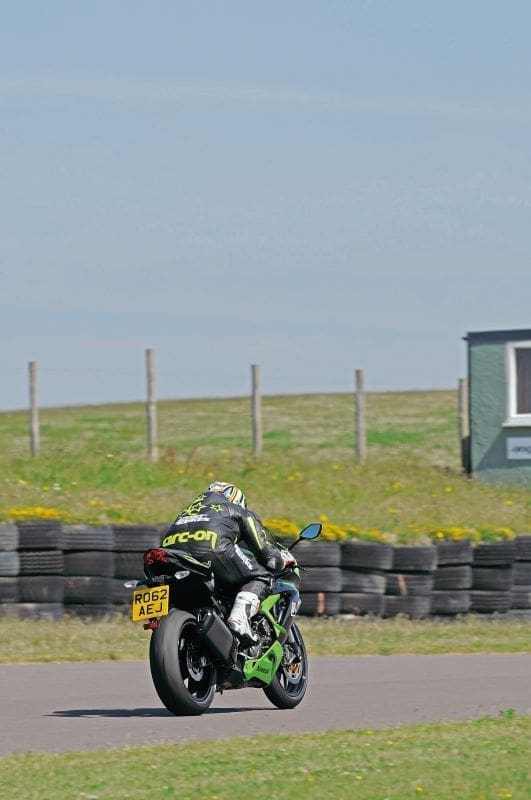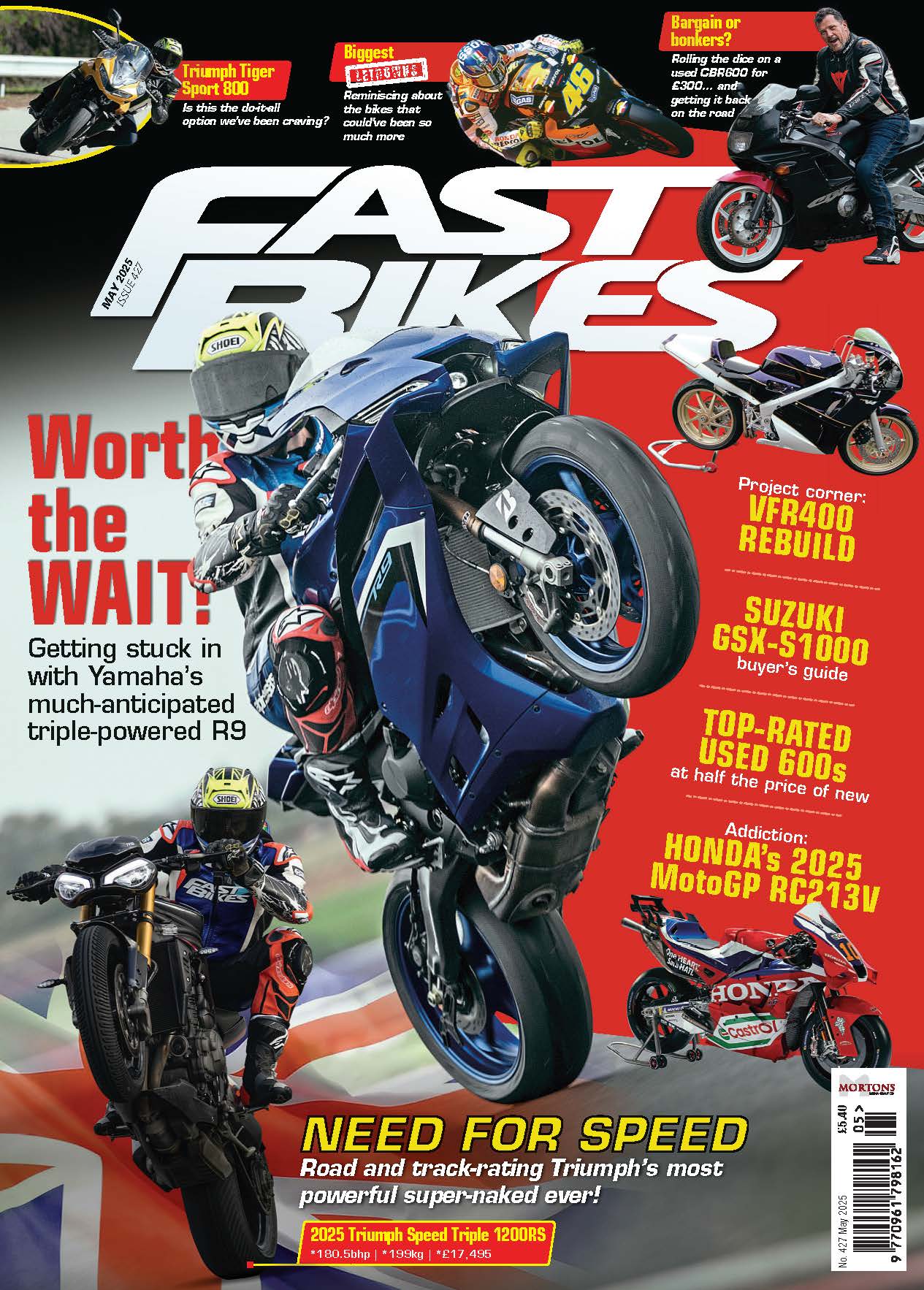The Kawasaki Ninja ZX-6R is back for 2024 – but is buying used a better idea?
Words: Jon Urry
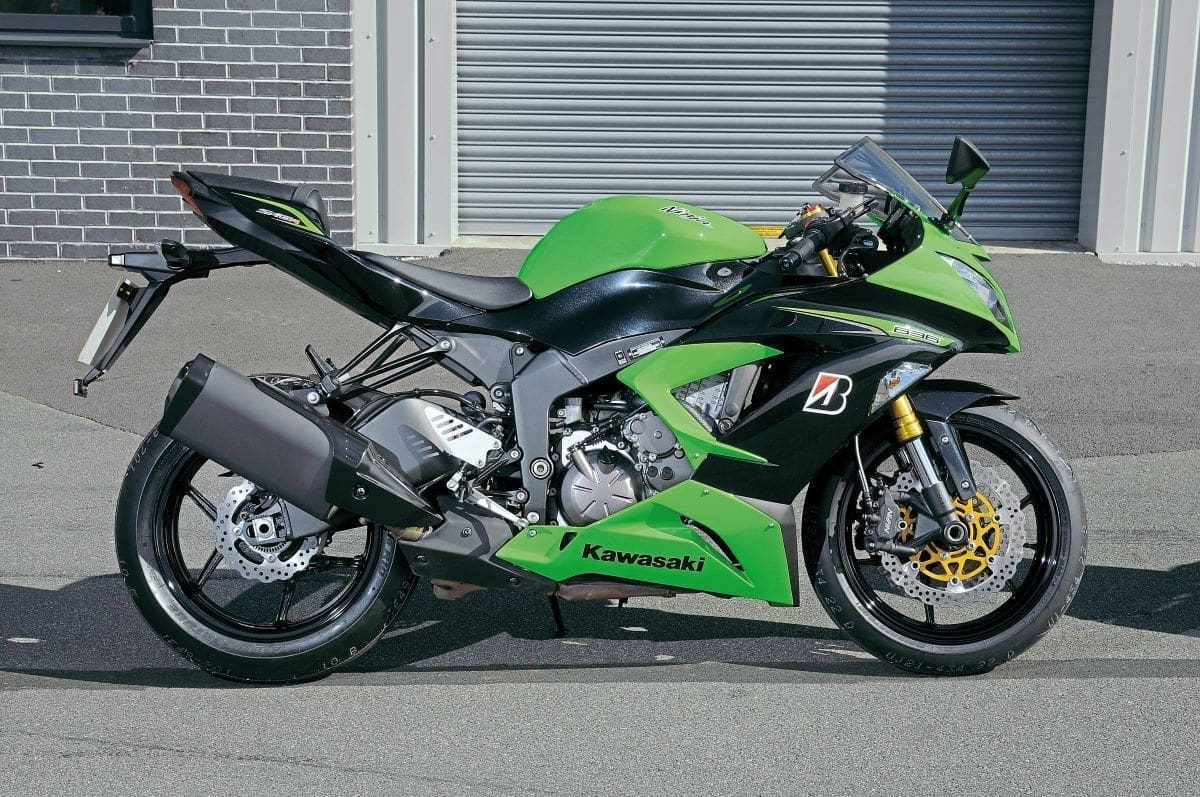
In 2013 there was a definite feel in the air that the supersport class’s best days were behind it. After exploding back into life when Yamaha launched the all-new R6 in 2008, the class had stagnated slightly (not helped by the financial crisis) and soon the popularity of litre bikes surged (fuelled by the increasing availability of PCP finance, making them more affordable to a greater number of riders), while supersport sales dipped. Despite this background, in 2013 Kawasaki released an all-new Ninja ZX-6R, and to help it compete in the showrooms with the new breed of tech-heavy litre bikes, the Ninja arrived, packing some electronic gizmos…
While the optional ABS was nothing new (Honda was already running a system on its CBR600RR), the 2013 Ninja ZX-6R brought traction control (KTRC) to the party, alongside two power modes and an updated slipper clutch. But as headline-grabbing as these flashy new gadgets were, what made the biggest difference to the new Ninja was actually down to good, old-fashioned engineering.
Back to 636cc as Kawasaki took the decision to focus its development more on road riding than track, the 2013 Ninja benefits hugely from this boost in capacity. Where the previous generation had impressed due to the fact its 599cc engine pulled harder than you expected it to do, the 2013 bike is way better, delivering a surging midrange that means you aren’t having to continuously tap-dance on the gear lever. What this equates to is a motor that, while still more than happy to unleash the rev-happy nature that makes supersport bikes so engaging and fun to ride, can dial its aggression back and be ridden in a far more relaxed manner. And this change of attitude is reflected in the ZX-6R’s chassis.
Featuring updated Showa separate function suspension (SFF-BP), the Ninja’s development team took the already incredibly impressive ZX-6R’s chassis (which had won a WSS title in 2012) and, without diluting its track ability, injected an extra element of refinement. And that’s what you really spot on the road.
Noticeably more settled over bumps than any previous supersport Ninja model, the 2013 ZX-6R is an absolute joy to ride thanks to its wonderfully compliant new suspension and updated shock linkage. You can really attack a B road on the Ninja, and where older versions would be battering your wrists and back with their overly firm damping, the 2013 generation soaks it all up and allows you to exploit the razor-sharp agility that has always been at the heart of a ZX-6R model. Thrilling, fun, and a bike that allows you to push your abilities, blasting down a twisty road on this generation of the ZX-6R is one of the best feelings two wheels can deliver… and it’s a sensation that isn’t harmed by the added tech.
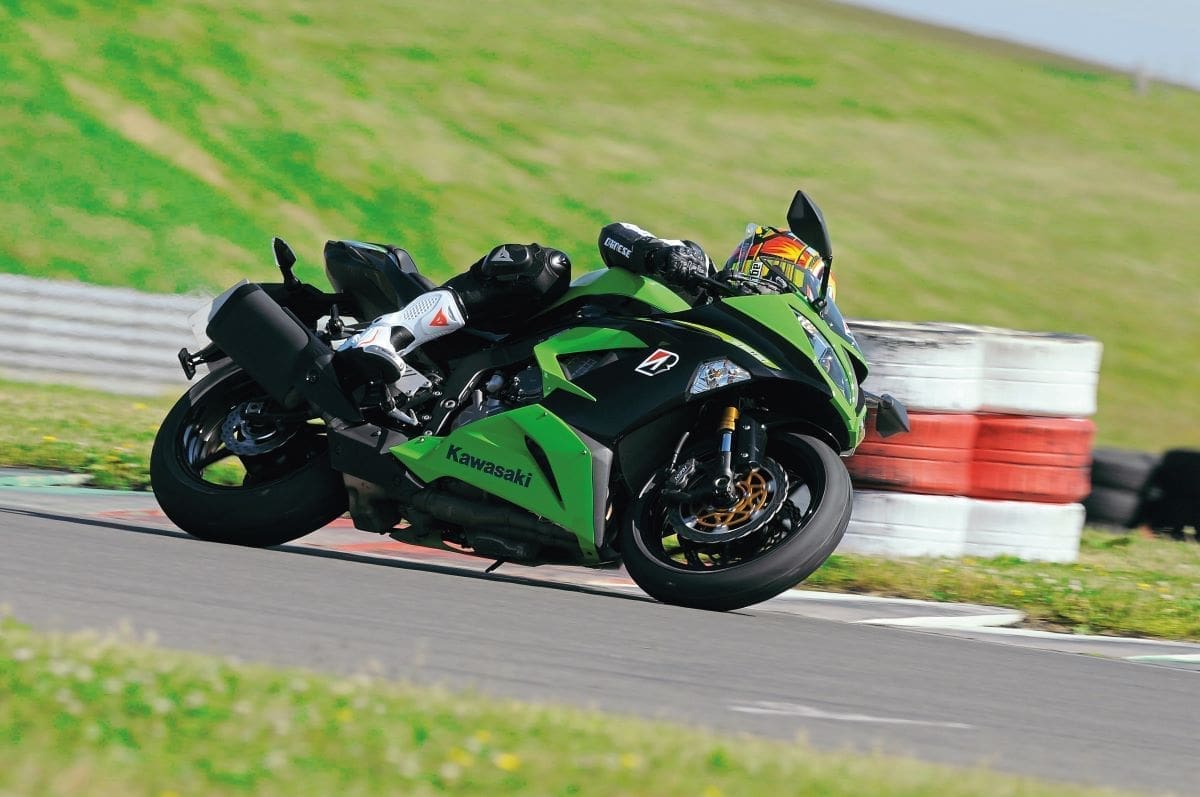
Arguably, there is no requirement for power modes on a supersport bike and the vast majority of ZX-6R owners will simply stick it in full-fat mode and ignore the switch, but the KTRC is a different matter. True, 110bhp is unlikely to overwhelm the grip levels of sticky modern rubber on a warm day, but come the colder months, sports tyres do take a while to get up to temperature and that’s where the system can become a valuable asset. Almost undetectable when grip levels are high (it even allows a cheeky little wheelie), the KTRC works away in the background and only shows itself when the need is genuinely required. Track or road riding, it is a hard system to find fault with, and where the optional ABS can start to get in the way when on track, KTRC doesn’t. If you want a bit more tech, the updated 2019 version adds a quickshifter to the party. So, where does this all leave the 2013-2020 Ninja ZX-6R?
With both Kawasaki and Honda now re-entering the supersport market for 2024, there is certainly going to be extra excitement surrounding the class. Will this excitement translate into sales? Of new bikes, you have to say probably not, as about £11k is a heck of a lot to pay for a 600cc bike, so brand-new they will remain somewhat limited in their appeal.
In the used market, where supersport sales are already red-hot, it is easy to predict an even bigger surge in interest. Is that any surprise?
Not really when you consider you can get a good 2013 ZX-6R for less than half the cost of a new 2024 model, and while it may lack the latest Ninja look, it has basically the same engine and chassis – and that’s what really matters.
Get in there now before the prices rise even further…

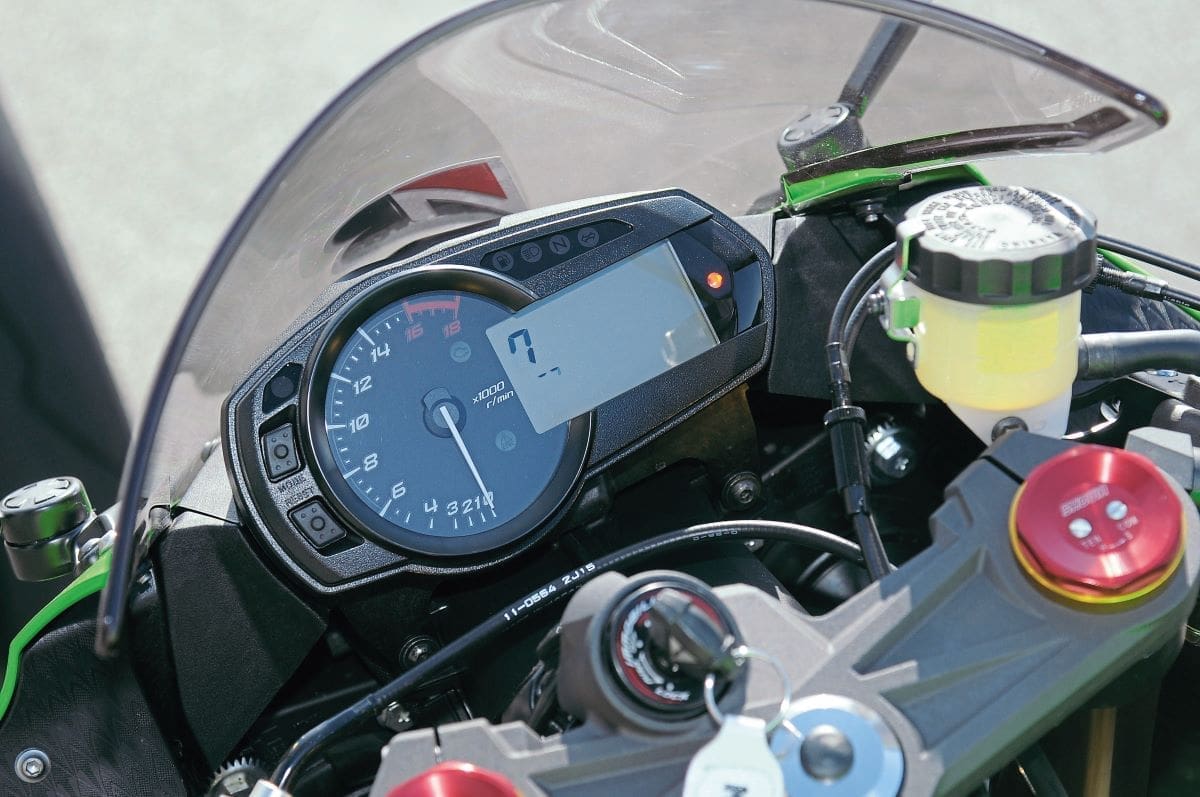
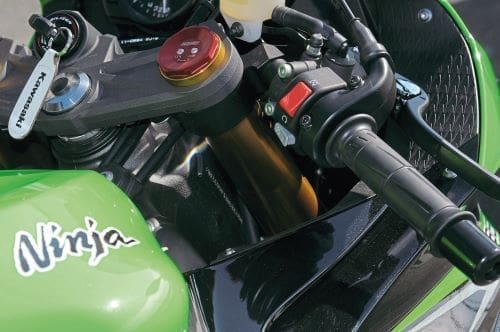
Gearing
If you want to add a bit of zing to a 2013-2018 Ninja, it is worth replicating the gearing of the 2019-2020 model. This bike runs 15/43 gearing, which is one tooth smaller on the front sprocket than the older version.
Servicing
There is a chance a used Ninja will be getting close to requiring its valve clearances being checked, which happens at 15,000 miles. A horribly tricky job due to the compact nature of the bike, it will set you back more than £650 – and that’s assuming nothing needs altering. If so, that’s another £100-£200 added to the bill. Factor this into any offer on a bike with higher mileage.
Brakes
For once, the Ninja’s calipers are actually up to the job, and stories of seized pistons are fairly rare. Just be cautious about the thickness of the discs as they have a minimum wear limit (stamped on the disc) and a new set will cost you about £500 from Kawasaki. Aftermarket items are cheaper at about £300.
Colours and variations
The Ninja came in standard colours (green, white, or black) as well as the KRT Edition paint scheme (2019 onwards). It was also sold in Performance spec, which added a road-legal Akrapovic can.
Jack it up
Interestingly, during the track launch of the ZX-6R, Kawasaki techs added a 4mm shim to the shock to jack up the back of the bike and sharpen its handling. If you take yours on track, this could be worth experimenting with.
Crash damage
The Ninja has always been quite track-focused, so you must be careful about crash damage or any signs of track abuse. Always treat any protective engine covers and so on with caution and look at its MoT history online. If there are gaps but the mileage keeps going up, be wary.
ABS
Kawasaki introduced ABS for the first time to the ZX-6R in 2013. Available as an optional extra, it added £1000 to the price tag as it’s a good road system that is also okay on track, if not outstanding. Expect to pay about £300 extra for a used ABS model, but always check the bike’s spec before buying.
Updated model
The Ninja received its last (well, until 2024) update in 2019, when a quickshifter was added (up shifts only), new gearing, LED lights, slightly altered bodywork, and a tweaked dash. Effectively, it’s the same bike as before, and to ride (gearing aside) feels pretty much identical. It was discontinued at the end of 2020.
Guess who’s back…
Somewhat surprisingly, Kawasaki has reintroduced the ZX-6R for 2024. Heavily based around the 2019 version, the new Ninja gets sharper styling, a TFT dash, and revised engine internals to allow it to meet the latest emissions regulations. Prices start at £10,599.
Tech Data
2013-2020 Kawasaki Ninja ZX-6R
Engine:
Type: 636cc, liquid-cooled, 16v, inline-four
Bore x stroke: 67mm x 45.1mm
Compression: 12.9:1
Fuelling: Electronic fuel injection
Tested power: 110bhp @ 13,250rpm
Tested torque: 63Nm @ 11,000rpm
Chassis
Frame: Aluminium twin spar
F suspension: 41mm inverted SFF-BP forks, fully adjustable
R suspension: Monoshock, fully adjustable
Front brakes: Four-piston radial calipers, 310mm discs
Rear brake: Single-piston caliper, 220mm disc
Dimensions:
Wheelbase: 1395mm
Seat height: 830mm
Wet weight: 192kg
Fuel capacity: 17 litres
Speed:
0-60: 3.14 sec
0-100: 6.39s
0-120: 9.12 sec
Stg ¼ mile: 10.55sec @ 133.78mph
Standing mile: 26.8s @ 163.31
Top speed: 168mph
Verdict: 7/10
The Ninja is a full-on supersport bike, but its extra capacity and compliant chassis makes it far easier on the road than some rivals. And it’s much better value than the new model!
+ Strong engine, great chassis, wild attitude
– It’s quite compact
